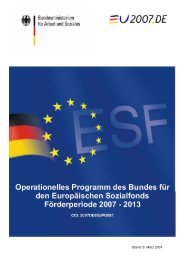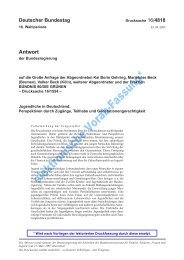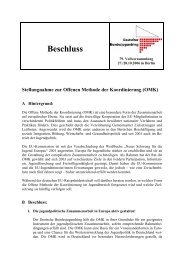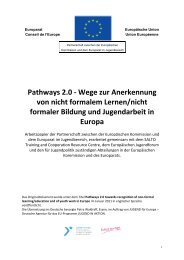National Quality Standards Framework (NQSF) - Homeless Agency
National Quality Standards Framework (NQSF) - Homeless Agency
National Quality Standards Framework (NQSF) - Homeless Agency
Create successful ePaper yourself
Turn your PDF publications into a flip-book with our unique Google optimized e-Paper software.
3.3 <strong>Standards</strong> 3.3.10 Collaboration and Integration Section 2: Organisational Management and Development<br />
Youth work providers operate collaboratively with other agencies and services to ensure an integrated response to the needs of young people.<br />
The indicators below describe what should be in place in support of this standard at each point along the scale of attainment. Please consider these indicators in relation to your organisation and<br />
insert P beside the appropriate indicator. You may add any other indicators you think are appropriate.<br />
Absent<br />
P Acquiring P Achieved P Advanced P<br />
30<br />
1. No collaboration exists with other services. 1. Limited collaboration exists with other<br />
services.<br />
2. Partnership arrangements are reactive. 2. Partnership arrangements are mostly<br />
reactive.<br />
3. Needs of the young people are not<br />
regarded in service provision.<br />
4. Services work in isolation and do not have<br />
regard to an area-based approach.<br />
5. No examples of resource-effective<br />
practices among services.<br />
3. Needs of the young people are recognised<br />
in service provision.<br />
4. Services work with others and aim to offer<br />
an integrated area-based approach.<br />
5. Some examples of resource-effective<br />
practices among services.<br />
6. No commitment to sectoral development. 6. Some commitment to sectoral<br />
development.<br />
Add any other indicators below:<br />
1. Collaboration exists with other services. 1. Active and productive collaboration exists<br />
with other services.<br />
2. Partnership arrangements are mostly<br />
proactive.<br />
3. Needs of the young people are clearly<br />
identified in service provision.<br />
4. Services work with others to provide an<br />
integrated area-based approach.<br />
5. Examples of resource-effective practices<br />
among services.<br />
2. Partnership arrangements are proactive.<br />
3. Needs of the young people are prioritised<br />
and central in service provision.<br />
4. Services work with others to provide<br />
an integrated and planned area-based<br />
approach.<br />
5. Clear examples of resource-effective<br />
practices among services.<br />
6. Commitment to sectoral development. 6. Clear commitment to sectoral<br />
development.<br />
In the relevant spaces below, please describe the evidence your organisation has in place in relation to the above indicators:<br />
Having considered the above, identify a position on the scale of attainment that best reflects your organisation’s position in relation to this standard (mark P on a point on the scale below).<br />
If you think your organisation is at different points on the scale of attainment in relation to the various indicators, choose a point on the scale that, overall, best reflects this position.<br />
Absent Acquiring Achieved Advanced<br />
Why have you chosen this point on the scale?
















